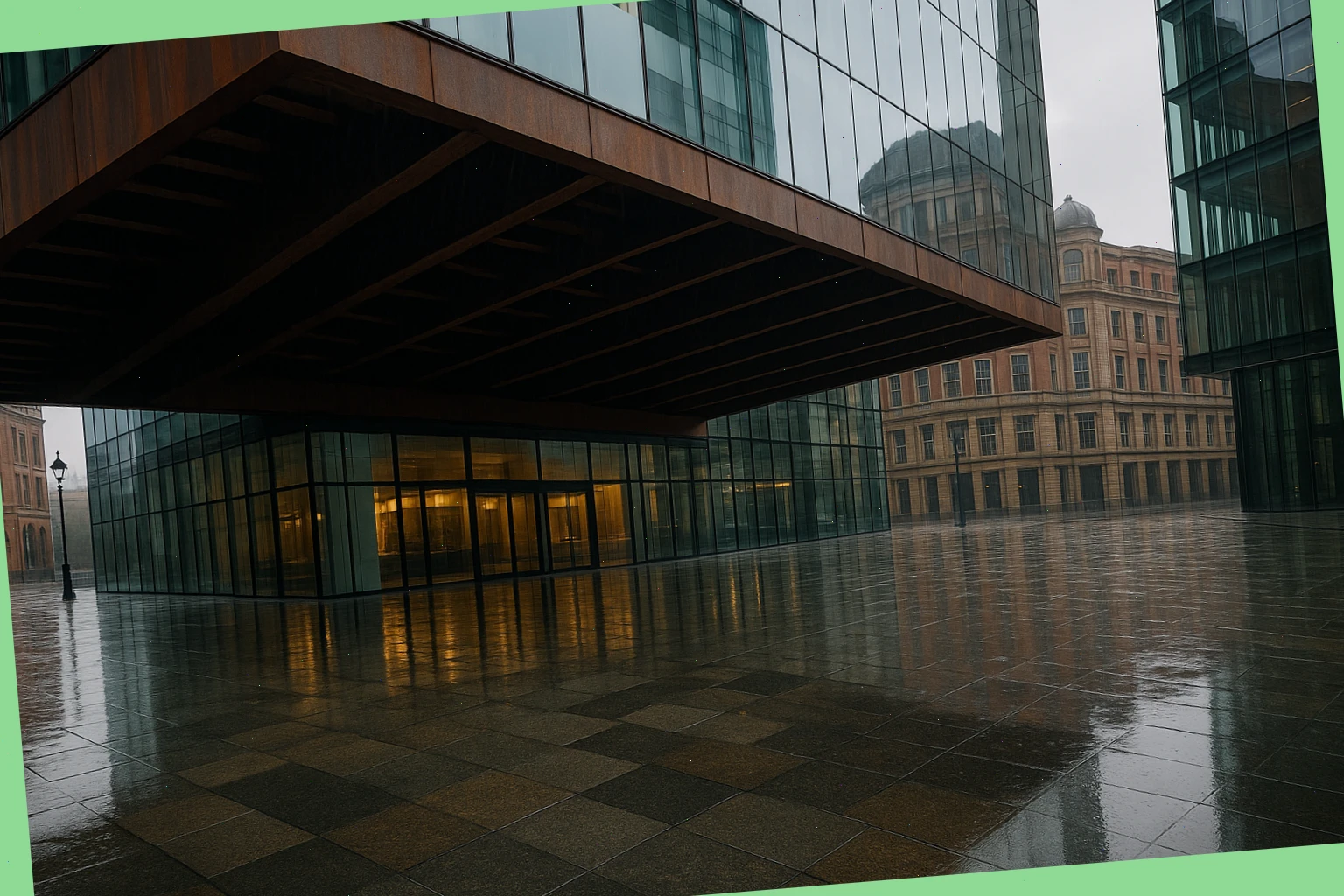Wet Plaza, Safe Footing

Reading a plaza through water
Rain defines English public space as much as sun does in warmer nations. Modern plazas of polished stone or resin-bound aggregate invite reflection—literally—but can also become uncertain ground. Our editors walked several central squares during a week of steady drizzle to understand how design deals with wetness.
Surface texture
Older cobbles, though uneven, provide friction through gaps and grain. Contemporary surfaces depend on micro-texture. In Birmingham’s Centenary Square, a granite finish was re-cut with thermal grooves after early slips. Designers now specify roughness values measured by pendulum tests, not intuition.
Material choice follows use. Resin composites near transport hubs dry faster; limestone requires sealing. Edges where paving meets glass shopfronts often create thin films of algae—minor visually, major in risk.
Drainage choreography
Plaza drainage is rarely noticed until it fails. The best examples channel rain invisibly between joints. Sheffield’s Peace Gardens uses narrow steel rills set level with the surface; water travels audibly but safely away. In contrast, some waterfront schemes exaggerate runoff, turning puddles into mirrored accents that animate the square.
Grading—the barely visible slope of paving—matters more than material. A two-percent fall is enough to move water without signalling incline to pedestrians or wheelchairs.
Behaviour and perception
People adjust instinctively. When paving glistens, walking lines tighten; crossings shorten. Benches stay empty unless covered. Cafés extend awnings, creating brief dry zones that redraw movement. Designers who observe this choreography learn to integrate canopy lines, planters, and lighting accordingly.
Reflections can enrich perception. A facade doubled in a shallow film appears taller; coloured LEDs multiply at night. Yet the effect depends on safety: beauty fades fast if someone slips.
Maintenance as design
Keeping a plaza safe in rain is not only cleaning but design foresight. Access for sweepers, electrical points for dryers, and concealed grit storage all play a part. In Liverpool ONE, crews use absorbent mats aligned with main desire lines—evidence that maintenance informs aesthetics.
Cities testing permeable paving report slower runoff and less glare. These surfaces darken evenly, avoiding patchy reflections that confuse depth perception.
Inclusive movement
Accessibility law in the UK requires even slip-resistant routes from public transport to key civic entrances. Architects now integrate tactile strips of contrasting roughness rather than colour alone, helping visually impaired visitors when surfaces shine.
The combination of texture, slope, and light defines inclusion more than signage. A plaza that works in heavy rain works for almost everyone.
Closing reflection
Wet plazas are not failures of design; they are living sensors of climate. Each droplet records the balance between ambition and practicality. When handled with subtlety, water becomes a medium of connection—between sky, stone, and passer-by.
Next time it rains, stand still for a moment and watch how the city edits itself in reflections. That quiet choreography is what Skyframe Cityworks seeks to map.